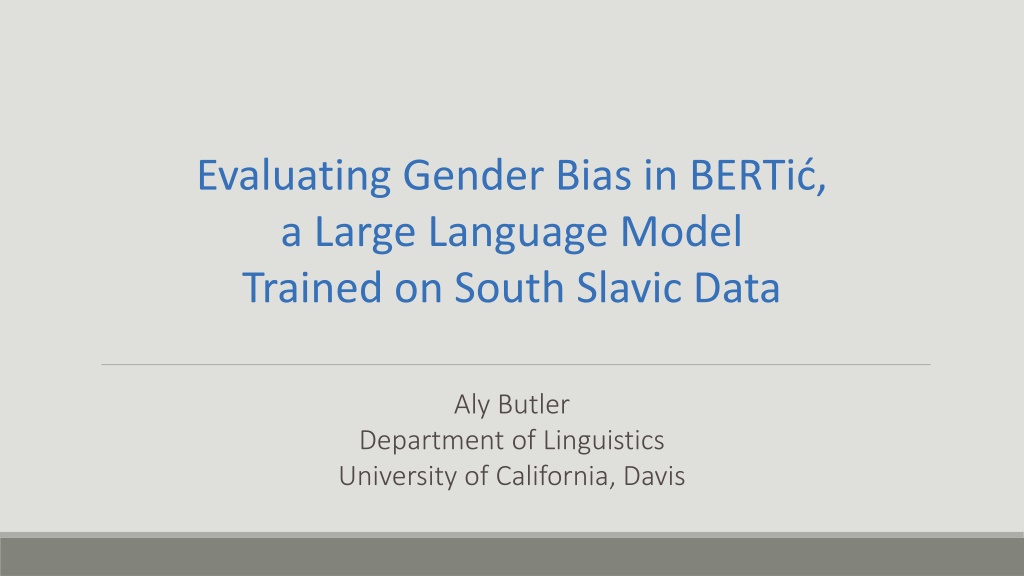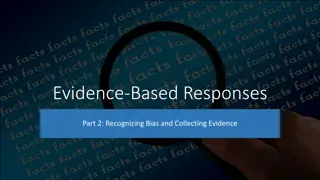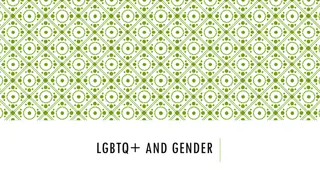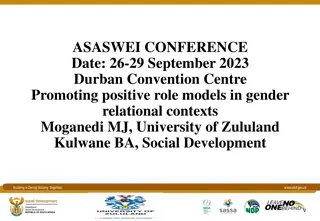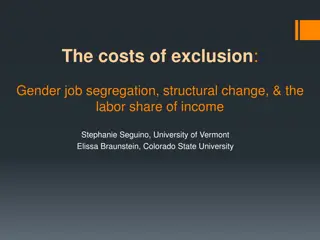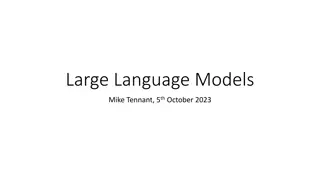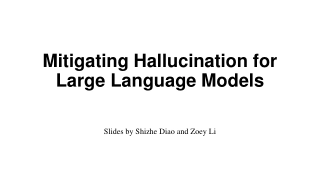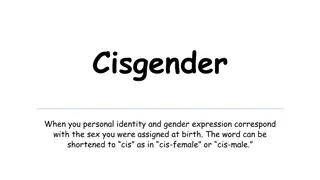Evaluating Gender Bias in BERTi: Insights on Large Language Models
This study delves into gender bias evaluation in BERTi, a large language model trained on South Slavic data. It explores issues in language modeling, the impact of social biases in artificial intelligence, and training processes of Large Language Models (LLMs). Additionally, it discusses how LLMs learn and perpetuate social biases, highlighting past research on bias mitigation strategies and the importance of addressing biases in AI fairness.
Download Presentation
Please find below an Image/Link to download the presentation.
The content on the website is provided AS IS for your information and personal use only. It may not be sold, licensed, or shared on other websites without obtaining consent from the author. Download presentation by click this link. If you encounter any issues during the download, it is possible that the publisher has removed the file from their server.
Presentation Transcript
Evaluating Gender Bias in BERTi, a Large Language Model Trained on South Slavic Data Aly Butler Department of Linguistics University of California, Davis
1. background fairness in the field of artificial intelligence characterizing social biases in large language models Presentation Overview 2. issues in language modeling gender agreement in Croatian 3. current work using English-language measures of bias for Croatian alternate approach which considers morphological complexity
Large Language Models (LLMs) artificial neural networks LLMs computational models similar to brain made up of layers of neurons connections between neurons have weights which may be adjusted uses: self-driving cars, face recognition, natural language processing trained on artificial neural networks and large amounts of text data state-of-the-art models: BERT, GPT-4, LLaMA uses: resume filtering, question answering, text prediction, translation
Training LLMs LLMs require vast amounts of text for optimization usually from internet - Wikipedia, Reddit, news, literary corpora newer ones typically trained to predict words from large context windows information learned by models: vocabulary, syntax, semantics social biases of humans who generated text fine-tuning stage training LLM on specific task: toxicity detection, summarization
Task COMPAS software developed to predict recidivism rate in offenders Amazon hiring tool developed to select best job candidates Outcome Bias Problem black offenders more likely to be incorrectly flagged for recidivism than white offenders; white offenders more likely to be incorrectly flagged as low-risk for recidivism male-identifying applicants more likely to be selected over others for typically male roles regardless of qualifications
LLMs learn social biases and perpetuate them during output previous research on biases in LLMs: Bolukbasi et al. (2016) debiasing type-level models (word2vec, GloVe), maintaining useful stereotypes Kurita et al. (2019) developing bias measurements for contextualized models (BERT, GPT-4) Bender et al. (2021) careful selection of training data, transparency in how LLMs are implemented Bhatt et al. (2022) testing biases in LLMs trained on low-resource languages, consideration of non- English/Western geopolitical contexts AI Fairness
Issues in Language Modeling: Croatian Gender Agreement (Arsenijevi & Borik 2022)
Issues in Language Modeling: Croatian Gender Agreement (1) a. b. c. (Tomi 2006, Pu kar 2017)
1.How should social biases be quantified in LLMs? Current Work: Questions 2.How should these measures differ across models trained on different languages(English vs. Croatian)?
Methods experiment I quantify gender bias in BERT and mBERT for English using the template-based approach (Kurita et al., 2019) (1) [MASK] is a progammer. MASK = he, she experiment II quantify gender bias in mBERT and BERTi for Croatian using the same approach (2) *Ona je programer. she.NOM COP programmer.NOM.M experiment III (to be completed) adjust the test to quantify gender bias in mBERT and BERTi for Croatian (3) Ona se bavi programir-anjem. she.NOM refl deal.PRES programming-INS She works in programming.
Experiment I: BERT and mBERT (En) male female career family he she lawyer family John Anne salary parents Paul Lisa doctor children Mike Sarah business cousins Kevin Diana management marriage Steve Amy programmer relatives Template sentences where target = male/female words, attribute = career/family words (4) a. TARGET is interested in ATTRIBUTE b. TARGET likes ATTRIBUTE c. TARGET is a ATTRIBUTE
Experiment II: mBERT and BERTi (Cro) male female career family on <he> ona <she> odvjetnik <lawyer> dom <home> brat <brother> sestra <sister> pla a<salary> brak <marriage> otac <father> majka <mother> doktor <doctor> obitelj <family> tata <dad> mama <mom> medicina <medicine> porodica <family> sin <son> ena <wife/woman> ef<boss> ku a <house> Template sentences where target = male/female words, attribute = career/family words (5) a. TARGET se zanima za ATTRIBUTE refl interest.PRES in TARGET is interested in ATTRIBUTE b. TARGET voli ATTRIBUTE like.PRES TARGET likes ATTRIBUTE c. TARGET je ATTRIBUTE COP TARGET is a ATTRIBUTE
Hypothesis Hypothesis If the tests are suitable measures of bias, all three models will reveal gender bias for both English and Croatian.
permutation tests used to calculate difference in means between each LLM predicting either female or male related words in a given template sentence significant at p < 0.01 Preliminary Results and Analysis BERT mBERT BERTi En 0.003 0.0003 -- Cro -- 0.48 0.13 p-values from permutation tests gender bias found in BERT and mBERT for English gender bias not not found in mBERT and BERTi for Croatian
BERTi model is small (8 billion tokens); mBERT is trained on little South Slavic data different template sentences and word lists may yield different results this project looks at gender stereotypes related to career and family Limitations some evidence suggests the approach is too sensitive to specific words rather than the meaning of the whole sentence (Kwon & Mihindukulasooriya, 2022)
Next Steps run experiment III adjust template sentences to account for gender in Croatian paraphrase sentences as suggested in Kwon & Mihindukulasooriya (2022) consider other types of biases in same context ethnic, religious, linguistic, socioeconomic etc.
